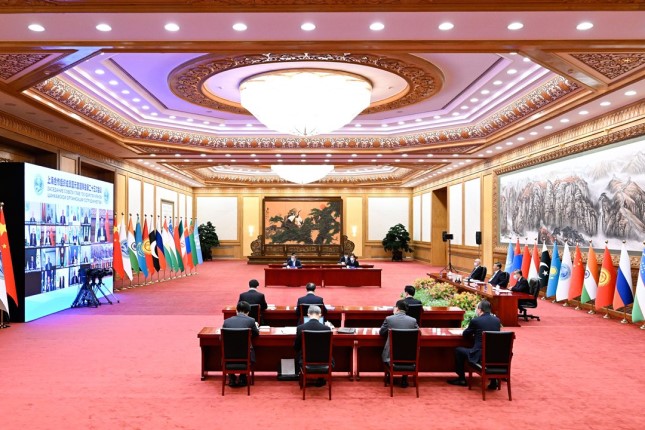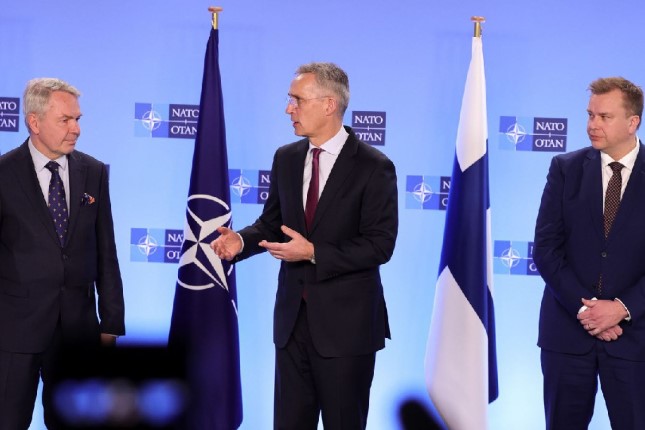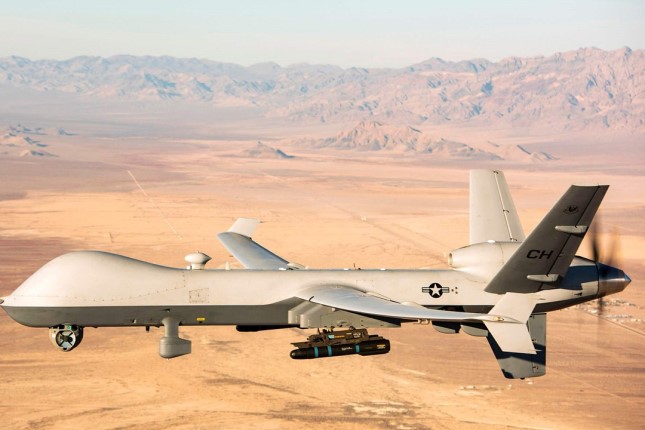As the scope and scale of the Hamas surprise attack on Israel becomes clearer, one question emerges more than any other from the detritus of the battlefield: How did such a massive, complex undertaking escape the notice of Israel’s vaunted intelligence service?
An equally important question is why wasn’t this attack detected by the U.S. intelligence community as well, given the massive expenditures made in countering terrorism since the terrorist attacks on the U.S. homeland of September 11, 2001?
The answers lie in the history of success Israel has enjoyed in identifying and responding to Hamas operations in the past, success which manifested itself into a culture of complacency, resulting in the deaths of hundreds of Israeli citizens — the very people the intelligence services were dedicated to protect.
The fact that this attack took place 50 years and a day from when Israel suffered what had been — up until this moment — Israel’s greatest intelligence failure, the 1973 Yom Kippur War, only reinforces the depth of the failure that transpired.
Findings of the Agranat Commission
In the weeks following the end of the Yom Kippur War, the government of Prime Minister Golda Meir formed a commission of inquiry headed by Shimon Agranat, the chief justice of the Israeli Supreme Court. The Agranat Commission, as it was subsequently called, focused on the flawed analysis conducted by Israeli military intelligence directorate (AMAN), with particular attention being placed on Eli Zeira, the head of AMAN’s Research and Analysis Department, or RAD.
Zeira was the principal architect of what became known as “the concept”, a dogmatic adherence to an analytical paradigm which had, until October 1973, proven itself reliable in the years that followed Israel’s victory in the six-day war of 1967.
The “concept” held that the Arab armies, while possessing a limited ability to initiate a war with Israel, were not ready for an all-out war, and as such would avoid engaging in actions which logically would lead to such an all-out war with Israel.
The analysts of RAD were criticized for an over reliance on inductive reasoning and intuition and failing to use structured deductive methodology. One of the conclusions reached by the Agranat Commission was the need for so-called structured analytical techniques, in particular what is known as “Analysis of Competing Hypotheses.”
This manifested itself in the development within AMAN of a culture of contrarian thinking, built around critical thinking designed to challenge unitary assessments and groupthink.
The United States also examined the root causes of its intelligence failures regarding the Yom Kippur War. A multi-agency assessment of the October 1973 intelligence failure published by the U.S. in December of that year concluded that the issue at that time wasn’t the inability to collect or even accurately assess intelligence data — in fact, the report stated, evidence of an a surprise attack by the armies of Egypt and Syria had been “plentiful, ominous, and often accurate” and that U.S. intelligence analysts debated and wrote about this evidence.
In the end, the December 1979 report said however, that the U.S. analysts — like their Israeli counterparts — had concluded there would be no attack, conclusions which, as the post-mortem noted, “were—quite simply, obviously, and starkly—wrong.”
Some of the critical issues which emerged from this assessment included the over-reliance by U.S. analysts on Israel to know its own security posture; analysts being married to preconceived notions about Arab military capabilities; a tendency for plausible interpretation of the same evidence; and a failure by analysts to challenge the “rational actor” fallacy.
Israel and US at Odds
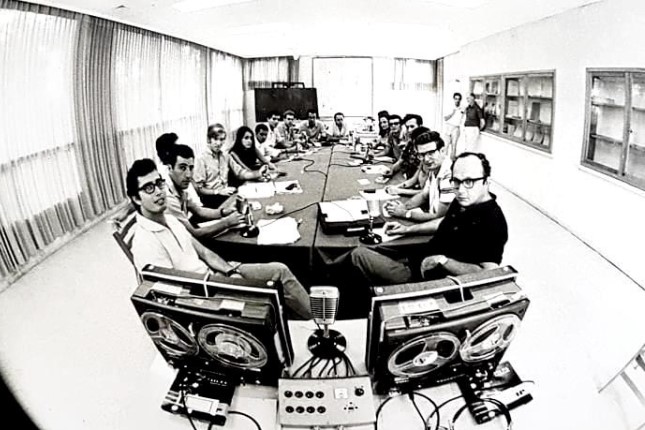
Recording and transcription of the Agranat Commission. Photo: Lkahan / Wikimedia Commons / CC BY-SA 4.0.
In the years that followed the Yom Kippur War, the intelligence communities of Israel and the U.S. established their own gravitational “pull”, with Israel employing a methodology of threat predictions and assessments that underpinned decisions to intervene militarily in Lebanon, often putting it at odds with U.S. policy makers.
Policy in Washington was made based on briefings by U.S. intelligence analysts who had developed a culture of downplaying Israeli intelligence in favor of their own. The resulting gap in analytical approaches and conclusions led to the intelligence crisis of 1990-1991 surrounding the threat posed by Iraqi SCUD missiles.
This crisis was predicated on the differences of priorities placed on the SCUD threat, both in the lead up to, and execution (regardless of the military objectives) of Operation Desert Storm, the U.S.-led campaign to evict Iraqi forces from Kuwait conducted in January-February 1991.
These differences only became exacerbated in the years that followed the end of that conflict, when both the U.S. and Israel struggled with how best to respond to the threat of Iraqi weapons of mass destruction, including its SCUD missiles.
I was at the center of the U.S.-Israeli intelligence controversy during this time, having been brought into the United Nations to create an independent intelligence capability to support the inspection-based effort to disarm Iraq.
From 1991 until 1998, I conducted sensitive liaison with both the C.I.A. and AMAN, and often found myself caught in the middle of the clash of cultures that had developed between the two.
This clash sometimes took the form of vaudeville comedy, such as the time I had to be ushered out the back door of an AMAN building to avoid being seen by the C.I.A.’s chief of station, who had arrived for the purpose of finding out what intelligence the Israelis were sharing with me.
On another occasion, I had run into a team of C.I.A. analysts on the streets of Tel Aviv who had been advising me on a particular inspection that was being planned. They were critical of the Israeli intelligence I was using to support this mission.
The purpose of their visit was to put pressure on Israel to stop the flow of information to the U.N. through me, arguing that, as a U.S. citizen, I should be getting my information from U.S. sources, and therefore Israel should flow all intelligence to me through them. Our meeting, it turned out, was no “chance” encounter, but rather set up by the Israelis, without my knowledge, so that I would be aware of the duplicity of my U.S. counterparts.
Such duplicity led to interactions of a more ominous character, with the C.I.A. green-lighting an F.B.I. investigation into allegations that I was spying on behalf of Israel. The U.S. actions had nothing to do with genuine concerns of espionage on my part, but rather were part of a larger campaign designed to minimize the influence of Israeli intelligence upon a U.N. inspection effort that the U.S. believed should instead be marching to the beat of a drum dictated by U.S. intelligence.
CIA vs. Israeli Intelligence
The animus that existed within the C.I.A. regarding Israeli intelligence was real and was grounded in the differing policy approaches taken by the two nations regarding the role of weapons inspectors and Iraqi WMD.
The U.S. was engaged in a policy of regime change in Iraq and was using weapons inspections as a vehicle to continue economic sanctions designed to contain the government of Saddam Hussein, and as a source of unique intelligence that could enable the U.S. to carry out operations designed to remove Saddam Hussein from power.
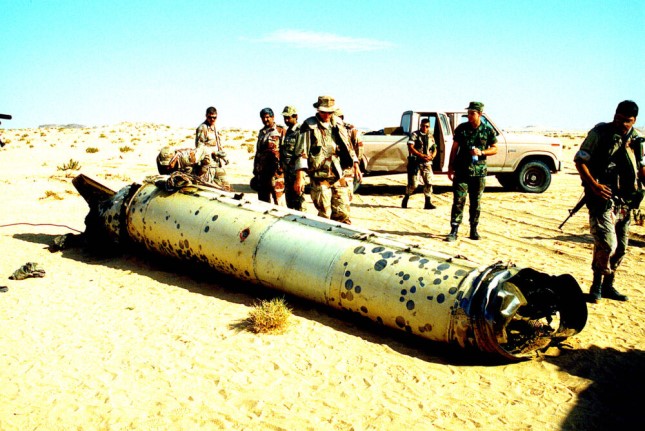
May 26, 1992: U.S. military examine remains of a Scud tail assembly during the Gulf War. Photo: Wikimedia Commons / Public domain.
The Israelis were singularly focused on the security of Israel. While the Israelis had entertained a regime change option in the first two years following the end of Desert Storm, by 1994 they had determined that the best way forward was to work with the U.N. inspectors to achieve the verifiable elimination of Iraq’s weapons of mass destruction, including the SCUD missiles.
One of the starker manifestations of the difference in approaches taken by the C.I.A. and Israel dealt with the effort I had led in accounting for Iraq’s SCUD missile arsenal.
In November 1993, I was summoned to the White House to brief a C.I.A. team, headed by Martin Indyk and Bruce Reidel, on my investigation, which had concluded that all of Iraq’s missiles had been accounted for.
The C.I.A. rejected my findings, declaring that their assessment of Iraqi SCUD missile capability was that Iraq maintained a force of 12-20 missiles along with several launchers, and this assessment would never change, irrespective of my work as an inspector.
By contrast, when I visited Israel for the first time, in October 1994, I had been approached by the head of AMAN, Uri Saguy, about my assessment regarding the accounting of Iraq’s SCUD missiles. I gave the AMAN director the same briefing as I gave the C.I.A.
Saguy, accompanied by the head of RAD at that time, Yaakov Amidror, accepted my conclusions in their entirety, and used them to brief the Israeli prime minister.
My experience with Israeli intelligence is far more revealing than my contemporaneous experience with the C.I.A., if for no other reason than the Israelis were trying to solve an intelligence problem (what was the real status of Iraqi weapons of mass destruction), while the U.S. was trying to implement a political decision regarding regime change in Iraq.
Between 1994 and 1998, I conducted 14 trips to Israel where I worked closely with AMAN, personally briefing two directors (Saguy and, from 1995, Moshe Ya’alon), two chiefs of RAD (Yaakov Amidror and Amos Gilad), and developed a close working relationship with intelligence analysts and operators from several Israeli intelligence organizations, including the legendary Unit 8200 — Israel’s signals intelligence unit.
A Rational Actor
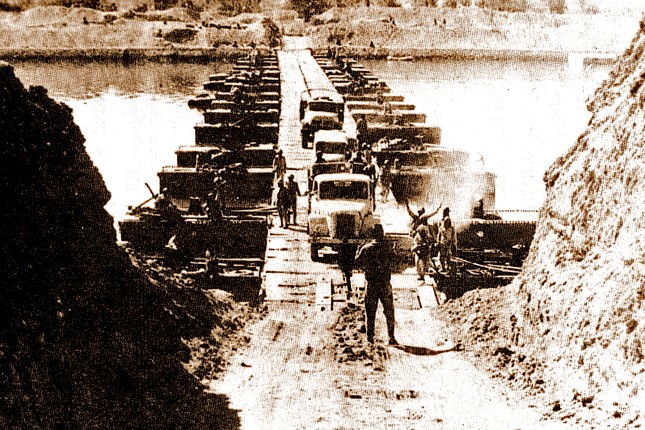
Egyptian forces cross a bridge laid over the Suez Canal on Oct. 7, 1973, during the Yom Kippur War/October War. Photo: Wikimedia Commons / Public domain.
The Israelis briefed me extensively on their post-Yom Kippur War methodology, especially their new contrarian approach to analysis. One of the more interesting aspects of this approach was the creation of a post, known within AMAN as “the doubting Thomas” (derived from the New Testament of the Bible, when Thomas — one of the 12 apostles of Jesus— would not believe that Jesus had come back from the dead until he saw him.)
I was introduced to the colonel who had this thankless task, explaining to me how he would receive every briefing before it was given to the director and proceeded to question conclusions and assertions. His queries had to be answered to his satisfaction before the briefing could be sent forward.
It was this colonel who helped formulate the Israeli conclusion that Saddam Hussein was a rational actor who would not seek a larger conflict with Israel that could result in the destruction of his nation — ironically embracing the same “rational actor” conclusions that had been erroneously reached in the lead up to the Yom Kippur War. On this occasion, the analysis was correct.
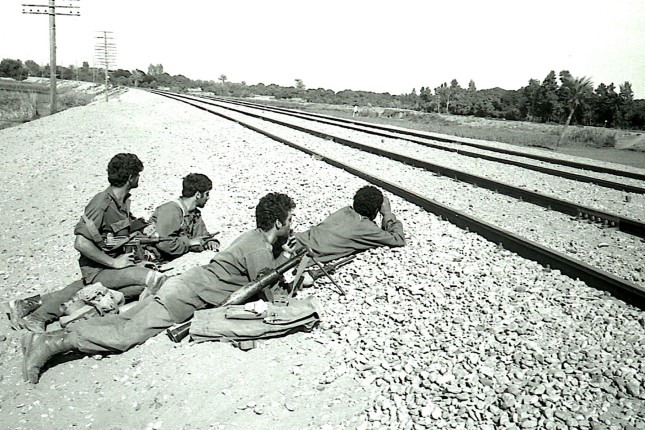
Israeli soldiers during Yom Kippur War. Photo: Haramati / Wikimedia Commons / Public domain.
The analysis produced by “the doubting Thomas” allowed the Israelis to consider the possibility of a change in approach regarding Saddam Hussein. It did not, however, reduce the vigilance of Israeli intelligence in making sure that this assessment was, and remained, accurate.
I worked closely with AMAN and Unit 8200 to put together an intelligence collection plan which used imagery, technical, human, and signals intelligence to ascertain Iraqi capabilities and intent. I personally witnessed the diligence with which the Israeli analysts and collectors pursued their mission. Literally no stone was left unturned, no thesis left unexplored.
In the end, the Israelis were able to back up Uri Saguy’s embrace of my 1994 conclusion regarding the accounting of Iraqi SCUD missiles with their own detailed analysis derived from intelligence collected through their own means, as well as that collected through collaboration with myself and other U.N. inspectors.
This success proved to be fatal to Israel and contributed to the failure of both U.S. and Israeli intelligence to predict the 2023 Yom Kippur-like attacks by Hamas.
In 1998 Yaakov Amidror was replaced as the head of RAD by Amos Gilad. Where Amidror fully embraced the contrarian approach taken by RAD and AMAN when it came to producing intelligence analysis, Gilad was of a different mind, believing that the Agranat Commission report had constrained Israeli intelligence from adapting to new challenges.
He believed that the trauma of Yom Kippur had resulted in AMAN adopting a conservative and minimalist, analytical approach, focusing on analyzing capabilities while neglecting intentions, resulting in over-cautious conclusions.
Not a Rational Actor

Smoke from the site of the World Trade Center in New York City on Sept. 11, 2001. Photo: U.S. National Archives.
Gilad was more inclined to embrace the C.I.A. assessments of the threat posed by Saddam Hussein and worked with the C.I.A. to dismantle the collaboration between the U.N. inspectors and AMAN.
In the aftermath of the Sept. 11, 2001, terrorist attacks on the United States, Gilad had thrown out the previous conclusion that Saddam was a rational actor and, as such, had posed no threat to Israel (an assessment backed up by the conclusion reached through the extensive cooperation between the U.N. inspectors and AMAN that Iraq did not possess viable quantities of weapons of mass destruction, and that there was no effort by Iraq to meaningfully reconstitute the industrial capability to manufacture weapons of mass destruction.)
Instead, Gilad painted a fact-free picture that postulated Saddam as a threat worthy of military intervention, thereby helping underpin the U.S. intelligence that justified a U.S.-led invasion of Iraq.
The fact that the intelligence regarding Iraqi weapons of mass destruction capabilities that was used to justify the U.S. invasion of Iraq was subsequently proven to be wrong did not undermine the newfound ardor between U.S. and Israeli intelligence.
The political goal of regime change had been accomplished, and as such it did not matter that the analytical product that had been relied upon for the flawed assessments was wrong.
In the lead-up to the 1973 Yom Kippur War, AMAN had disregarded a plethora of intelligence reporting predicting the Arab attacks. Because the consequences of this failure had resulted in an Israeli political embarrassment, it was called out and remediation undertaken.
No Embarrassment, Unlike Yom Kippur
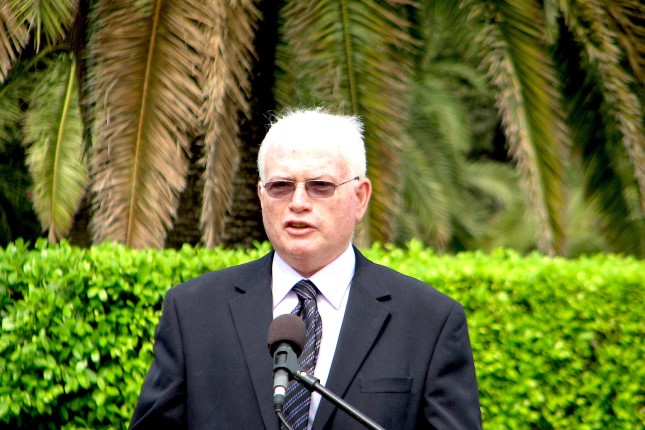
Amos Gilad in 2010. Photo: Hanay / Wikimedia Commons / CC BY-SA 3.0.
The lead-up to the 2003 invasion of Iraq was different. AMAN had disregarded its own considerable body of evidence, accumulated through years of close cooperation with U.N. weapons inspectors that showed Iraq did not possess meaningful quantities of weapons of mass destruction, nor the desire to reconstitute the production capabilities necessary for their reacquisition.
But because the consequences of this failure did not manifest in political embarrassment in Israel, unlike with Yom Kippur, this failure was ignored.
Indeed, the principal culprit for this failure, Amos Gilad, was elevated in 2003 to head the powerful Political-Military Affairs Bureau, a position he held until 2017. During his tenure, Gilad was said to enjoy more influence over policy than anyone else. He helped strengthen ties between the U.S. and Israeli intelligence communities and returned Israel to the pre-Yom Kippur War practice of over reliance on inductive reasoning and intuition void of structured deductive methodology.
One of the major consequences of Gilad’s long tenure as head of the Political Military Affairs Bureau was the re-subordination of the U.S. intelligence community to Israeli analytical judgements on the grounds that Israel knew best the threats it faced.
This reality was manifest in the words of U.S. National Security Advisor Jake Sullivan, speaking at The Atlantic Festival a week before the Hamas attacks, when he optimistically concluded that, “The Middle East region is quieter today than it has been in two decades,” adding that “the amount of time I have to spend on crisis and conflict in the Middle East today, compared to any of my predecessors going back to 9/11, is significantly reduced.”
The foundation of Sullivan’s errant optimism seemed to be a joint U.S.-Israeli policy that sought the normalization of relations between Israel and the Arab world, first and foremost with Saudi Arabia.
Israeli Prime Minister Benjamin Netanyahu, who for more than three decades has been the poster child for Israeli security, had bought into the idea of normalization with the Saudis as the key component of a strategic realignment of power in the Middle East away from Iran, and toward Israel.
This faith in the imperative of normalization was a vivid demonstration of how Israel’s new emphasis on intention over capabilities blinded it to the reality of the threats emanating out of Gaza.
Likewise, the fact that the U.S. had once again subordinated its threat analysis to Israeli conclusions —especially in circumstances where Israel saw no immediate danger — meant the U.S. did not spend too much time looking for indications that might contradict the Israeli conclusions.
Outsmarting AI
But perhaps the largest source of the Israeli intelligence failure regarding Hamas was the over reliance Israel put on intelligence collection and analysis itself. Gaza and Hamas have been a thorn in the side of Israel for years, and as such have attracted the overwhelming attention of the Israeli intelligence and security services.
Israel has perfected the art of human intelligence against the Hamas target, with a proven track record of placing agents deep inside the Hamas decision-making hierarchy.
Unit 8200 likewise has spent billions of dollars creating intelligence collection capabilities which vacuum up every piece of digital data coming out of Gaza — cell phone calls, e-mails, and SMS texting. Gaza is the most photographed place on the planet, and between satellite imagery, drones, and CCTV, every square meter of Gaza is estimated to be imaged every 10 minutes.
This amount of data is overwhelming for standard analysis techniques relying on the human mind. To compensate for this, Israel developed a huge artificial intelligence (AI) capability which it then weaponized against Hamas in the short but deadly 11-day conflict with Hamas in 2021, named Guardian of the Walls.
Unit 8200 developed several unique algorithms which used immense databases derived from years of raw intelligence data collected from every possible source of information.
Building upon concepts of machine learning and algorithm-driven warfare that have been at the forefront of Israeli military research and development for decades, Israeli intelligence was able to use AI to not only select targets, but also to anticipate Hamas actions.
This ability to predict the future, so to speak, helped shape Israeli assessments about Hamas’s intent in the lead up to the 2023 Yom Kippur attacks.

Celebrating Hamas anniversary, Dec. 14, 2009. Photo: DYKT Mohigan / Flickr / CC BY 2.0.
Israel’s fatal mistake was to openly brag about the role AI played in Operation Guardian of the Walls. Hamas was apparently able to take control of the flow of information being collected by Israel.
There has been much speculation about Hamas “going dark” regarding cell phone and computer usage to deny Israel the data that is contained in those means of communication. But “going dark” would have, by itself, been an intelligence indicator, one that AI would have certainly picked up.
Instead, it’s highly probable that Hamas maintained an elaborate communications deception plan, maintaining a level of communications sufficient in quantity and quality to avoid being singled out by AI — and by Israeli analysts deviating from the norm.
In the same way, Hamas would likely have maintained its physical profile of movement and activity to keep the Israeli AI algorithms satisfied that nothing strange was afoot.
This also meant any activity — such as training related to paragliding or amphibious operations — that might be detected and flagged by Israeli AI was done to avoid detection.
The Israelis had become prisoners of their own successes in intelligence collection.
By producing more data than standard human-based analytical methodologies could handle, the Israelis turned to AI for assistance and, because of the success of AI during the 2021 operations against Gaza, developed an over reliance upon the computer-based algorithms for operational and analytical purposes.
Turning from the Contrarian
The origins of Israel’s massive intelligence failure regarding the 2023 Hamas Yom Kippur attacks can be traced to the decision by Amod Gilad to divorce Israel from the legacy of contrarian analysis born of the intelligence failure of the 1973 Yom Kippur War that produced the same over-reliance on inductive reasoning and intuition, which led to the failure to begin with.
AI is only as good as the data and algorithms used to produce the reports. If the human component of AI — those who program the algorithms —are corrupted by flawed analytical methodologies, then so, too, will the AI product, which replicates these methodologies on a larger scale.
In Volume 1 of The Gathering Storm, Winston Churchill’s comprehensive history of the Second World, the British World War II leader quips, “It is a joke in Britain to say that the War Office is always preparing for the last war.”
Human nature being what it is, the same quip can be tragically applied to the Israeli military and intelligence services in the lead up to the 2023 Yom Kippur attacks by Hamas. It appears that the Israelis were singularly focused on the successes they enjoyed in the 2021 Operation Guardian Walls, and the role played by AI in bringing about that success.
Denied the benefit of the contrarian approach to analysis put in place in the aftermath of the Agranat Commission, Israel set itself up for failure by not imagining a scenario where Hamas would capitalize upon the Israeli over-reliance on AI, corrupting the algorithms in a way that blinded the computers, and their human programmers, to Hamas’ true intention and capability.
Hamas was able to generate a veritable Ghost in the Machine, corrupting Israeli AI and setting up the Israeli people and military for one of the most tragic chapters in the history of the Israeli nation.
Photo: Palestinians near the rubble of an Israeli missile strike on Gaza, Oct. 8 © Fars Media Corporation / Wikimedia Commons / CC BY 4.0.
Source: Consortium News.
























